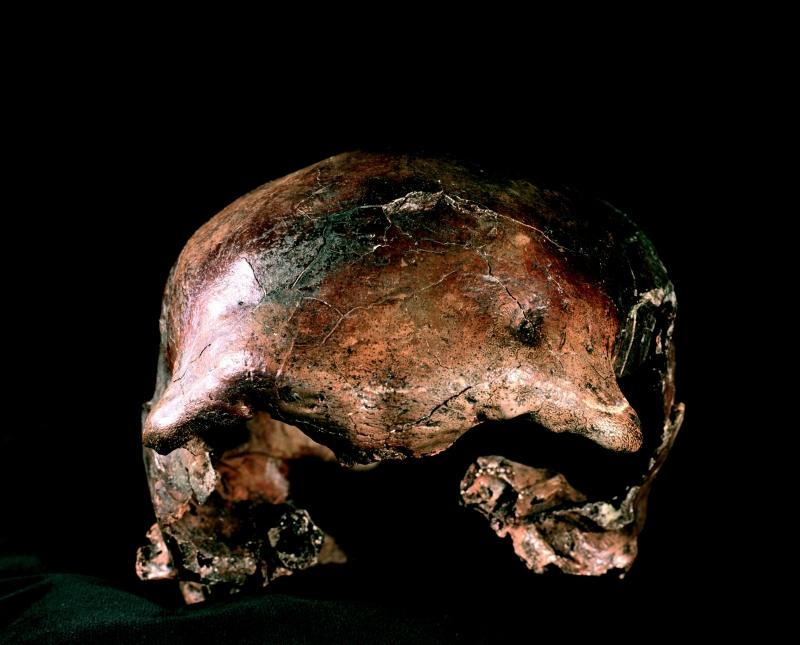Mladeč Caves - Characteristics
MLADEČ KARST
The Mladeč Karst forms isolated islets of Devonian limestones emerging from non-karstic rocks on the northern edge of the Bouzovská Highlands and from new sediments of the Morava River valley in the Hornomoravský úval area in the wider surroundings of the village of Mladeč west of the town of Litovel. Under the surface of the Třesín Hill (345 m a.s.l.), the Skalka Hill (335 m a.s.l.) and others, many caves were formed by water from ancient flows. The largest one is the Mladeč cave system, formerly also called Boček Hollow or Fürst Johanns Höhle.
MLADEČ CAVES
-
They run through the Třesín Hill (345 m a.s.l.) near the western edge of the village of Mladeč and they are the largest cave system of the Mladeč Karst
-
They represent a predominantly horizontal and very broken labyrinth of corridors, domes and high chimneys with remarkable modelling of walls and ceilings, with stalactite and stalagmite decoration and with numerous block cave-ins, with some steep corridors which extend even below the level of the underground water
-
They are one of the most important archaeological sites in the world and probably the oldest, largest and most northern settlements of the Cro-Magnon people in Europe, who lived here as long as 31 thousand years ago
-
They have a total of 1,250 meters of corridors and halls with denivelation of 30 meters
-
They were, after the cave-in of the entrance a very long time ago, rediscovered in about the year 1826 while quarrying stone; they have been open to the public since the turn of the 19th and 20th centuries and since 1911 they have been lit by electric light
-

They have been protected by law since 1933 – now as the Třesín National Natural Monument (1933) and the Třesín nature monument (1993) in the Litovelské Pomoraví Protected Landscape Area and simultaneously as a cultural relic
-
The cave tour is 380 metres long with a small archaeological exposition; the tour takes about 40 minutes
-
There is a constant air temperature of around 8 °C (ca 46°F) and a relative air humidity of 95 %.
Evolution of the Caves
ORIGIN AND DEVELOPMENT OF THE MLADEČ CAVES
The present appearance of the complex underground labyrinth under the eastern spur of the Třesín Hill (345 m a.s.l.) was also affected by erosion activities of subsurface flows, corrosion action of atmospheric water penetrating into the limestone layers, and repeated tectonic movements in the Haná faults. The cave complex stretches from the valley of the Hradečka Brook to the wide valley of the Morava River and was created as a subhorizontal flow phreatic cave formed by underground water of the Hradečka Brook. The labyrinth of parallel and cross corridors of three main directions and three cave floors influenced the course of folded limestone beds and geological faults. Spacious dominant halls are mostly connected with narrow high corridors narrowing upwards and verging into fissures and chimneys. On fissure crossings and in weakened zones of limestones breakdowns of ceilings and walls occurred and the formed spaces were filled with debris. The Mladeč Caves are characteristic with huge cave coulisses and often perforated rock closures and pillars. At several places high chimneys closed with huge stuck blocks lead to the surface. Stuck rock blocks and stones are often found in high fissures in ceilings as well. The course and period of stagnation of the underground flow, water from which appears today only in the lower floor, which is little known so far, is documented by a detailed modelling of walls and ceilings.
A large amount of loamy, clayey and sandy sediments were successively washed to the caves through chimneys and already forgotten entrances. Many skeletal remains of Pleistocene vertebrates as well as numerous skeletal remains of people together with their tools were found there. Due to previous research excavations and clearings of loams during the works to make the cave accessible to the public, it is no longer possible to determine the original extent and arrangement of sediments and more precise positions of findings. Prevailing erosion and corrosion modelling of the walls in some parts of the caves is complemented by sinter crusts and stalactite and stalagmite decoration which in some parts can be correlated with archaeologically significant layers of cave sediments. The present Mladeč Caves are probably only a part of a large underground system of considerable geological age and complex geological development.